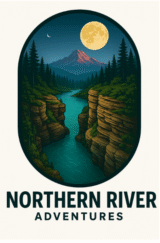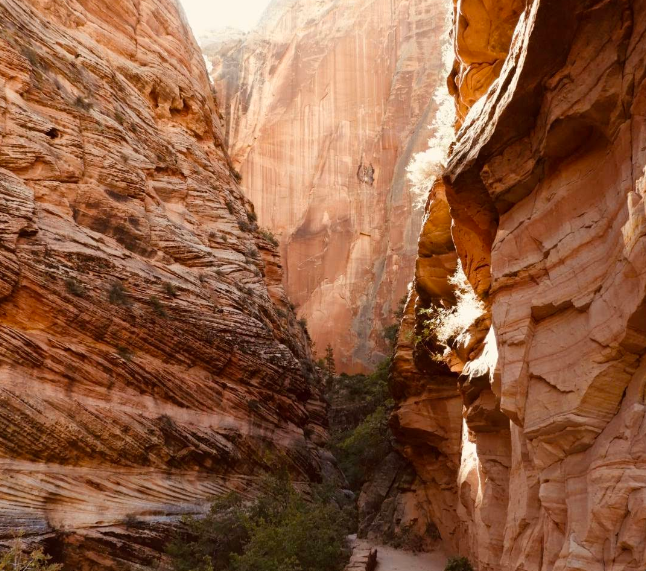
Zion National Park isn’t just Utah’s first national park — it’s one of the most awe-inspiring landscapes in North America. With its crimson cliffs, slot canyons, and emerald pools, Zion is where geology meets serenity, and every trail leads to a new perspective. Whether you’re tackling the iconic Angels Landing, wading through the Narrows, or capturing the sunrise over Court of the Patriarchs, Zion offers something for every kind of adventurer.
This comprehensive guide will take you through everything you need to know — from its ancient past to today’s must-know visitor tips. Expect history, hiking recommendations, safety advice, and insights that help you make the most of your time in Zion.
🏜️ A Brief History of Zion National Park
The land we now know as Zion has been inhabited for thousands of years. Archaeological evidence indicates that Paleo-Indians were the first to live in the region, followed by the Ancestral Puebloans and later the Southern Paiutes. These Indigenous peoples left behind petroglyphs, food storage pits, and ancient dwellings scattered throughout the canyons.
In the late 18th century, Spanish explorers traversed the region, followed by Mormon settlers in the 1860s. The settlers named the area “Zion,” a biblical term that reflects their reverence for the towering cliffs and serene valleys. Early names for the area included Mukuntuweap, which was designated as a National Monument in 1909 by President William Howard Taft.
However, due to difficulty pronouncing the Indigenous name, local politicians and boosters lobbied to change the name to Zion. In 1919, Zion National Park was officially established, becoming Utah’s first national park and one of the earliest in the United States.
In the 1920s and ’30s, the Civilian Conservation Corps (CCC) helped build much of the park’s infrastructure, including roads, tunnels, and trails that are still in use today. The famous Zion-Mount Carmel Highway and Tunnel, completed in 1930, connected the east and west sections of the park and opened up tourism to a wider audience.
Throughout the 20th century, visitation steadily increased. In the 1950s, the park received major updates in facilities, including modernized campgrounds and visitor centers. The environmental movement of the 1970s and ’80s helped drive conservation efforts, and in recent decades, Zion has become one of the most visited national parks in the United States.
Climate change and over-tourism have presented new challenges. Zion now sees more than 4 million visitors annually, which puts stress on its fragile ecosystems. Shuttle systems, permitting, and trail closures have become part of park management to mitigate human impact.
In recent years, Indigenous communities have been increasingly involved in preserving the cultural history and ecological integrity of the land. Efforts to integrate traditional ecological knowledge (TEK) with modern conservation practices are underway, bringing the story of Zion full circle — a land first respected by its earliest inhabitants, now shared and protected for future generations.
The park’s dramatic geology — from the towering Navajo Sandstone cliffs to the deep slot canyons like The Narrows — continues to awe and inspire. Formed over 250 million years through deposition, uplift, and erosion, the landscape tells a story written by wind, water, and time.
Today, Zion National Park is not just a haven for hikers and climbers, but also for artists, scientists, and spiritual seekers. It is a living classroom, a sacred space, and a wilderness sanctuary.
Whether you’re navigating Angel’s Landing, photographing the Court of the Patriarchs at sunrise, or simply gazing at the stars from a riverside camp, Zion offers a timeless experience that connects people across generations.
🗺️ Where Is Zion National Park Located?
Zion National Park is located in the southwestern corner of Utah, near the city of Springdale. It sits at the intersection of the Colorado Plateau, Great Basin, and Mojave Desert, creating a stunning blend of ecosystems and landscapes. The park spans over 229 square miles, with the Virgin River carving through the heart of its dramatic canyons. While it’s part of Utah’s “Mighty 5” national parks, Zion stands out with its easily accessible grandeur and deep slot canyons. Visitors can reach Zion by flying into Las Vegas (2.5 hours away) or Salt Lake City (about 4.5 hours), making it a central stop on many Southwest road trips.
🧗 What to See and Do in Zion National Park
Zion offers a bucket-list lineup of natural wonders and hiking challenges. The Angels Landing Trail is world-famous for its dizzying heights and narrow rock spine — but requires a permit due to its popularity and safety concerns. Equally iconic is The Narrows, where hikers wade through the Virgin River between towering sandstone walls. Other highlights include the Emerald Pools (a family-friendly hike with waterfalls), Observation Point (a panoramic view without the crowds), and Canyon Overlook Trail, ideal for sunrise photography. For those staying longer, the Kolob Canyons section of the park offers quieter trails, crimson cliffs, and solitude away from the main canyon’s bustle. Biking the Zion Canyon Scenic Drive or canyoneering through Orderville Canyon adds extra ways to explore this multi-layered wonderland.
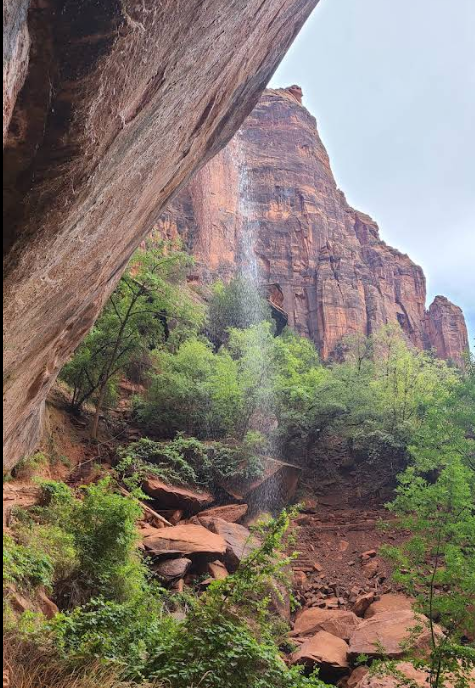
Why Zion Should Be on Your List
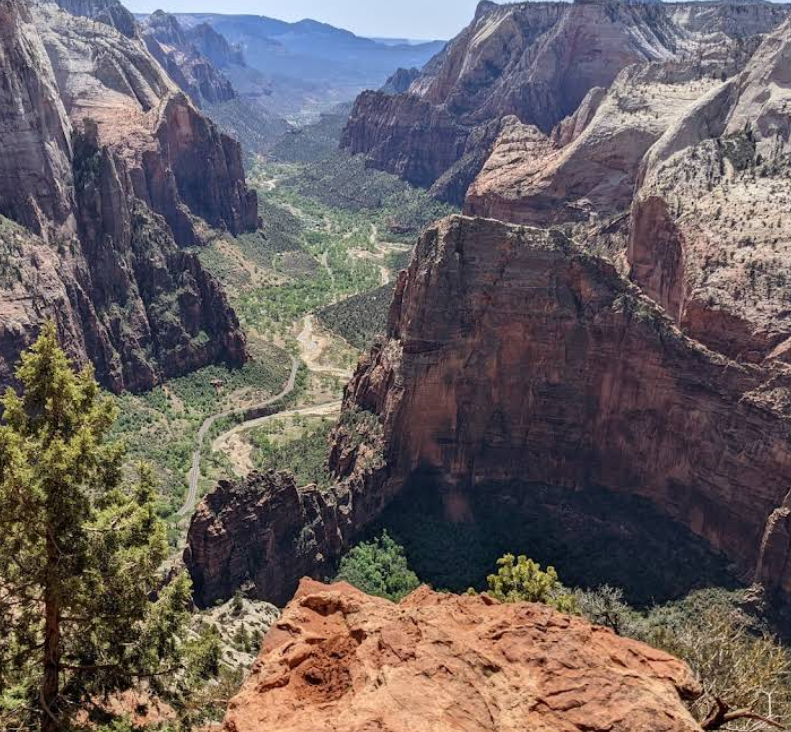
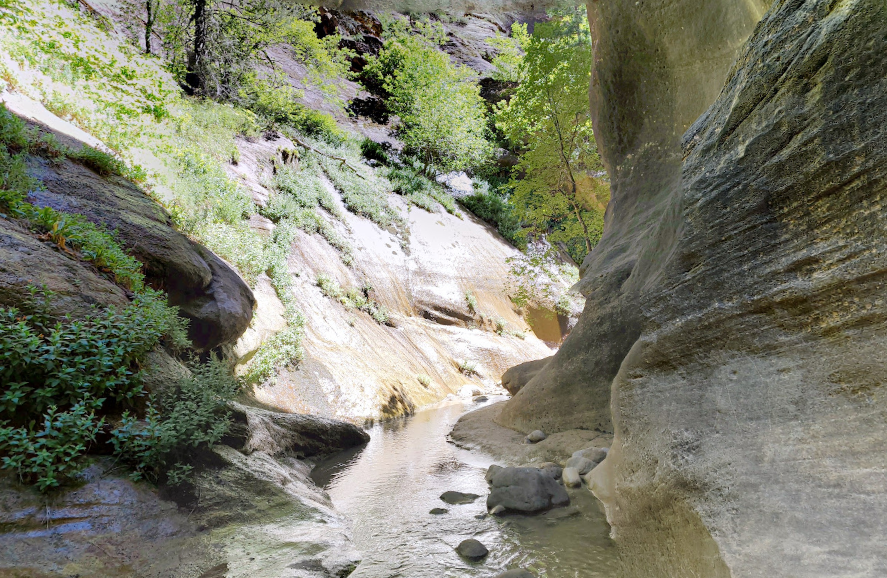
Zion isn’t just a park — it’s a journey through deep time, culture, and nature’s raw power. Every trail reveals a different side of its identity, from the towering cliffs of Angels Landing to the serene beauty of Emerald Pools. It’s a place where adrenaline and peace coexist, where sunrise over red rock is a kind of morning prayer.
But beyond the jaw-dropping views and heart-pounding hikes, Zion teaches us something deeper. It reminds us that wild places are essential — not only for ecological health but for human renewal. In a world that often moves too fast, Zion asks us to slow down, to listen to the wind against the canyon walls, to follow the Virgin River upstream and discover what lies around the bend.
This park’s story is still being written, and every visitor becomes part of that narrative. Whether you come for the climbs, the photography, the geology, or the quiet, Zion meets you where you are.
Its enduring popularity proves that natural beauty never goes out of style — and that stewardship is more important now than ever. As you plan your visit, remember that preserving Zion’s magic for the next generation starts with each of us. Tread lightly. Respect the land. Learn its history.
And most importantly: let it move you.
🐾 What Wildlife Can You Expect to See?
Zion’s diverse terrain supports over 290 species of birds, 75 mammals, and 30 reptiles, making it a surprising haven for wildlife. Early morning or dusk are the best times to spot desert bighorn sheep, especially along rocky ridgelines. Mule deer frequently graze near the Zion Lodge, while rock squirrels and lizards scurry across trails. If you’re lucky, you might spot a gray fox or hear the howl of a coyote echo through the canyons. Birdwatchers can catch glimpses of California condors, peregrine falcons, or Mexican spotted owls—some of which are protected species. While mountain lions and bobcats are present, sightings are rare. Always observe from a distance and never feed wildlife — Zion’s ecosystem depends on wild animals staying wild.
🛒 Need Gear for Zion?
If you’re looking for durable, tested, and trail-ready gear, I recommend checking out our curated selections in the Northern River Adventures Shop. We’ve gathered some of the most reliable tools and apparel for hikers, campers, and national park explorers.
🛍️ Visit Our Outdoor Gear Shop
🧙 A Canyon’s Whisper: The Legend of the Watchman
Before the canyon had a name — before trails were carved and bridges built — the Paiute people spoke of a spirit that watched over this land. They called him the Watchman, a guardian who lived among the sandstone cliffs, keeping travelers safe and storms at bay.
As the sun dipped below the horizon, casting golden light across the Virgin River, the Watchman’s silhouette would stretch long over the valley — a symbol of strength, patience, and eternal vigilance. According to legend, if you hiked with an honest heart and listened closely, you could hear the canyon speak back. Not in words, but in rustling cottonwoods, eagle calls, and the distant hum of falling water.
Many believe the Watchman still stands sentry at Zion’s gate — not just as a peak, but as a presence. When the wind sweeps through the canyons or a sudden hush falls over the land, it is said he walks beside you, guiding your steps.
So as you leave Zion, don’t think of it as an end. Think of it as a story you’ve stepped into — and one you carry forward, in your boots, your breath, and your memory.
🌄 Final Thoughts: Pack Smart, Respect the Land
📥 Subscribe to get new national park guides, off-grid tips, and gear reviews straight to your inbox.
📌 Pin this Guide to your outdoor planning board!
🧡 Support the Journey Shopping through our affiliate links helps keep this blog going. We only recommend gear we’d trust on the trail ourselves.
So pack smart, respect the land, and most importantly — stay safe out there, adventurer.
